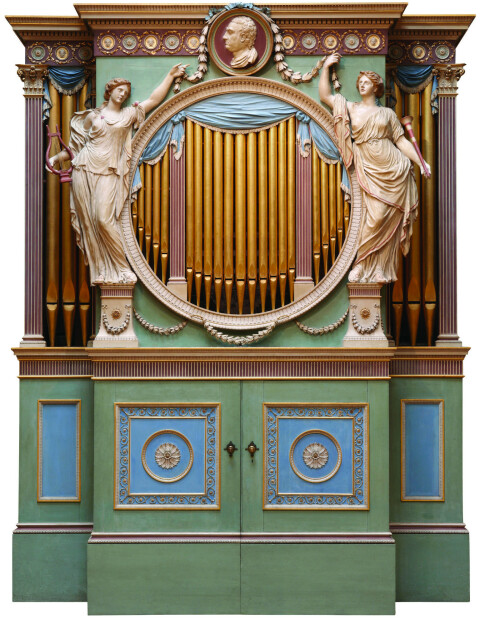The Williams-Wynn collection

Paul Sandby
Sir Watkin Williams-Wynn Sketching


Joshua Reynolds
Charlotte Grenville, wife of Sir Watkin Williams-Wynn

Toilet service, Thomas Heming, London 1768

Chamber Organ, 1774
Sir Watkin Williams-Wynn (1749–1789) was perhaps the greatest patron of the arts Wales has ever produced. He was a collector of Old Master paintings and commissioned work from many artists and sculptors. He was a patron of architects, designers and gardeners, had a passion for music and loved the theatre. He was also the head of a great landed family, owning an estate of over 100,000 acres in north Wales and Shropshire. His principal home was Wynnstay, near Ruabon. In 1768–9 he toured France, Switzerland and Italy, spending lavishly on art. In Rome he commissioned a great portrait of himself and his companions from Pompeo Batoni. He married twice – his first wife Henrietta Somerset, a daughter of the Duke of Beaufort, died young, but you can see her magnificent silver gilt toilet service, made by the royal goldsmith of the day, at National Museum Cardiff.
Sir Watkin commissioned several pictures from Sir Joshua Reynolds, founding President of the Royal Academy. These include a splendid portrait of his second wife Charlotte in Turkish costume, with some of their children, painted around 1778. He also ordered work from the Welsh landscape painter Richard Wilson, and included in his collection a portrait of Wilson by Rome-based Anton Raphael Mengs, bought by the Museum from Wynnstay in 1947.
Sir Watkin spent part of his time in London, where in 1772–5 he employed the neo-classical architect Robert Adam to build him a house in St James's Square. Adam's reputation was based on his skill in co-ordinating all aspects of a building, and for his wealthy, enthusiastic Welsh patron he designed mirrors, carpets and furniture and even the table silver. The largest piece of Adam furniture from the house is the case he designed for John Snetzler's great chamber organ. This is still in playing order, and is used at National Museum Cardiff for organ recitals. Portraits on display of Sir Watkin's harpist, John Parry, are further reminders of his passion for music.
Although Sir Watkin was an aristocratic dilettante – in politics as well as in his cultural life – he enabled dozens of architects, painters and musicians to produce some of their best work.